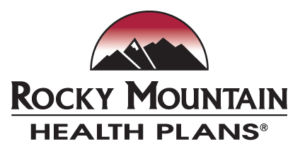PROFILE: Western Colorado Pilots New Medicaid Payment Models
 Health care is traditionally a fee-for-service system and Colorado Medicaid program is no exception. However, on the Western Slope of Colorado, Medicaid, Rocky Mountain Health Plans (RMHP) and several partnering provider and community organizations are testing new payment methodologies that could drastically change the way care is paid for and delivered.
Health care is traditionally a fee-for-service system and Colorado Medicaid program is no exception. However, on the Western Slope of Colorado, Medicaid, Rocky Mountain Health Plans (RMHP) and several partnering provider and community organizations are testing new payment methodologies that could drastically change the way care is paid for and delivered.
The passage of House Bill 1281 during the 2012 session empowered organizations within the Medicaid Accountable Care Collaborative to develop innovative ways to reform payment and health care delivery. In July of 2013, the Department of Health Care Policy and Financing (HCPF) announced that RMHP’s implementation proposal was chosen as the pilot program.
Beginning in the summer of 2014, Medicaid patients in seven Western Slope counties will have the opportunity to enroll in a global payment program that will integrate both primary care and behavioral health services. RMHP estimates that 18,000 individuals will be enrolled, and will receive supports based on patterns of care, hospital referrals, and social determinants such as poverty and chronic health conditions.
The program is budget neutral as per the requirements of HB 1281; all services and integration must be at no additional cost outside of the current Medicaid budget. Patrick Gordon, Vice President of Community Integration at RMHP, describes the financial challenges of the initiative noting, “There is no more money to pump into inefficient health care processes. Instead we have to make fundamental reforms to the way we deliver care and pay for it within the resources that we already have.”
In implementing these reforms, the health plan and providers will be fully accountable to the total cost of treating their attributed patients. As opposed to the current system where providers get paid based on the number of visits and services they provide, the new payment model gives establishes a fixed budget for all health care services. The health plan and providers are accountable for providing the best quality care possible across the continuum with the funding available.
At the same time, the program is also a gain-sharing initiative. When treatment costs come in under budget, the surplus dollars are passed along to all organizations who have assumed cost accountability. The money comes back into the communities and incentivizes all involved to move quality treatment, patient health, and wellbeing move to the forefront of the equation.
Mr. Gordon stresses the connection between quality care and potential gains-sharing payments. “There will be no shared savings of any type if we collectively fail to meet specific quality targets. We have established measures in the areas of cardiovascular risk, obesity and depression, and we’ve also established a new measure regarding patient activation which helps measure an individual’s own understanding of the relationship between their decisions and their health.”
Just as the payment structure is “global,” so too is the view of total patient care. Mr. Gordon points out that “behavior, environment and social factors have a far greater impact on health outcomes and total cost than health care itself.” HB 1281 enables RMHP to work with providers to integrate primary care, behavioral health, and other social interventions into a holistic model of care delivery. With engaged and empowered patients, providers and patients can work hand in hand to enhance their health and quality of care received.
With the program scheduled to launch in July, RMHP has convened an Executive Oversight Committee, which includes consumers, providers, and employers from across the region. Involvement of each of these groups makes the initiative, as Mr. Gordon puts it, “A community process, not a corporate process.”
RMHP envisions that the program will continue long after the formal pilot period ends in the summer of 2016. “Our view is that this will be ongoing. Health care as it stands today is unsustainable and fragmented. “We’re moving forward now to improve this system and we’re not going back.”
Previously published as part of CIVHC’s Spotlight on Innovation series.

